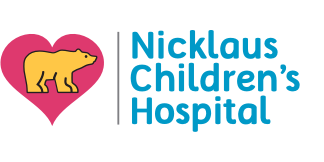- Parents Home
- Para Padres
- Allergy Center
- Asthma Center
- Cancer Center
- Diabetes Center
- Diseases & Conditions
- Doctors & Hospitals
- Emotions & Behavior
- First Aid & Safety
- Flu Center
- Food Allergy Center
- General Health
- Growth & Development
- Heart Health
- Homework Help Center
- Infections
- Newborn Center
- Nutrition & Fitness Center
- Play & Learn Center
- Pregnancy Center
- Q&A
- Recipes
- School & Family Life
- Sports Medicine Center
- Videos
- Kids Home
- Para Niños
- Asthma Center
- Cancer Center
- Diabetes Center
- Feelings
- Getting Help
- Health Problems
- Health Problems of Grown-Ups
- Heart Center
- Homework Center
- How the Body Works
- Illnesses & Injuries
- Kids' Medical Dictionary
- Movies & More
- Nutrition & Fitness Center
- Puberty & Growing Up
- Q&A
- Recipes & Cooking
- Relax & Unwind Center
- Stay Safe Center
- Staying Healthy
- Staying Safe
- Videos
- Teens Home
- Para Adolescentes
- Asthma Center
- Be Your Best Self Center
- Cancer Center
- Diabetes Center
- Diseases & Conditions
- Drugs & Alcohol
- Expert Answers (Q&A)
- Flu Center
- Homework Help Center
- Infections
- Managing Your Medical Care
- Managing Your Weight
- Nutrition & Fitness Center
- Recipes
- Safety & First Aid
- School & Work
- Sports Center
- Stress & Coping Center
- Videos
- Your Body
- Your Mind
A to Z Symptom: Rash
What's a Rash?
A rash is an area (or areas) of skin that is discolored, irritated, bumpy, painful, or swollen. Usually, rashes aren't harmful or dangerous.
Rashes can be dry and scaly, wet and warm, crusty and blistered, or flat and painless. On some skin tones, a rash can appear red. Some rashes form right away and others can take several days to appear.
What Causes a Rash?
Many things can cause rashes, including medical conditions, allergies, and infections. Some are caused by bacteria (such as impetigo), viruses (chickenpox, cold sores, and measles), fungi (ringworm), and skin parasites (lice, bedbugs, and scabies). Often, the specific cause is unknown.
In kids, common causes and types of rashes include:
- diaper rash
- eczema
- erythema toxicum
- hives
- Lyme disease
- pityriasis rosea
- poison ivy
- roseola
- tinea (ringworm, athlete's foot, jock itch)
How Is a Rash Treated?
Some rashes go away on their own. When they don't, treatment depends on the cause.
For rashes that may be caused by an allergen, such as hives, the doctor will try to find out which food, substance, medicine, or insect caused it so that it can be avoided in the future. Many fungal skin infections (like ringworm and athlete's foot) can be treated with over-the-counter topical antifungal creams and sprays.
Itchiness often can be managed with home care like oatmeal baths, cold compresses, anti-itch creams, moisturizers like petroleum jelly, or calamine lotion. More severe cases might be treated with an antihistamine (either as a liquid or pill) to reduce itching and redness.
Call the doctor if your child has a rash and also seems ill or has a fever, or if the rash lasts more than a week.
What Else Should I Know?
Many rashes can be itchy, but it's important to try not to scratch them. Scratching can make a rash take longer to heal and can lead to infection or scarring.
All A to Z dictionary entries are regularly reviewed by KidsHealth medical experts.

© 1995- The Nemours Foundation. KidsHealth® is a registered trademark of The Nemours Foundation. All rights reserved.
Images sourced by The Nemours Foundation and Getty Images.

